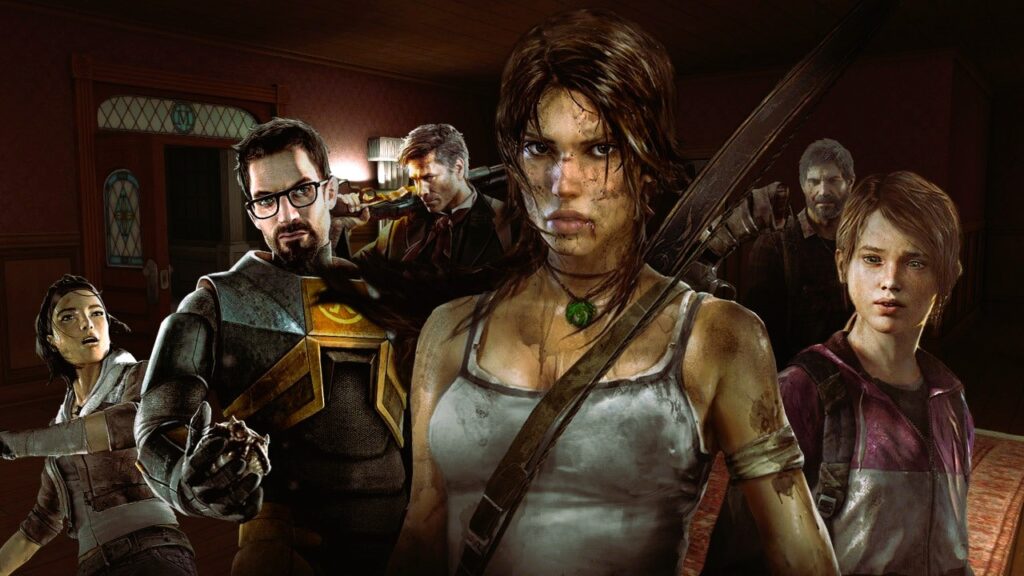Video games have come a long way since their humble beginnings as simple pixelated diversions. As technology has advanced and gaming has evolved into a multi-billion-dollar industry, so too has the art of video game storytelling. In this article, we’ll take a journey through the evolution of video game storytelling, from its early roots to the complex narratives of modern masterpieces.
The Early Days: Arcade Adventures
In the early days of gaming, storytelling took a backseat to gameplay mechanics and technical limitations. Games like “Pac-Man” and “Space Invaders” offered little in the way of narrative depth, focusing instead on addictive gameplay and high scores. However, even in these early titles, the seeds of storytelling were present, with players creating their own narratives and backstories to complement the on-screen action.
The Rise of Narrative-Driven Games
As technology advanced and gaming hardware became more powerful, developers began to explore new ways of incorporating storytelling into their games. This led to the rise of narrative-driven games, which placed a greater emphasis on character development, plot twists, and emotional resonance.
One early example of this trend is “Final Fantasy,” a groundbreaking RPG series that introduced players to richly detailed worlds, complex characters, and epic storylines. With each new installment, the “Final Fantasy” series pushed the boundaries of video game storytelling, paving the way for future narrative-driven games.
The Golden Age of Adventure Games
The late 1980s and early 1990s saw the emergence of the adventure game genre, which placed a heavy emphasis on storytelling and puzzle-solving. Games like “The Secret of Monkey Island,” “King’s Quest,” and “Day of the Tentacle” offered players immersive worlds to explore, filled with memorable characters, clever dialogue, and intricate plotlines.
These games relied on a combination of text-based storytelling, hand-drawn artwork, and point-and-click gameplay to create engaging interactive experiences. While the graphics may have been simple by today’s standards, the storytelling was anything but, with players often spending hours unraveling mysteries and uncovering secrets.
The Rise of Cinematic Gaming

As technology continued to advance, so too did the possibilities for storytelling in video games. The introduction of CD-ROM technology in the mid-1990s allowed developers to incorporate full-motion video, voice acting, and cinematic cutscenes into their games, leading to a new era of cinematic gaming.
Games like “Metal Gear Solid,” “Final Fantasy VII,” and “Resident Evil” pushed the boundaries of what was possible in terms of storytelling, blurring the lines between video games and traditional cinema. These games featured elaborate plot twists, memorable characters, and epic set pieces, immersing players in immersive cinematic worlds like never before. Did you like the article? Read also about the game Reviews ARK.
The Modern Era: Interactive Narratives
Today, video game storytelling has reached new heights of sophistication, with developers exploring innovative ways of incorporating narrative into their games. From branching storylines and player choice to interactive dialogue and dynamic world-building, modern games offer unprecedented levels of immersion and agency for players.
One standout example of this trend is “The Witcher 3: Wild Hunt,” an open-world RPG that places a heavy emphasis on player choice and consequence. With its sprawling narrative, complex characters, and morally ambiguous decisions, “The Witcher 3” offers players a truly immersive storytelling experience that can be shaped by their actions and decisions.
Conclusion: A New Frontier
In conclusion, the evolution of video game storytelling has been nothing short of remarkable. From the simple arcade adventures of the past to the sprawling narratives of modern masterpieces, video games have continually pushed the boundaries of storytelling in ways that were once unimaginable. As technology continues to advance and new generations of gamers emerge, the future of video game storytelling looks brighter than ever.
For more information on the evolution of video game storytelling, visit Wikipedia.

